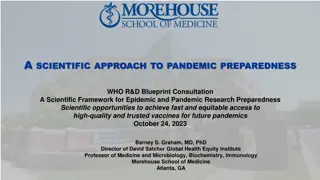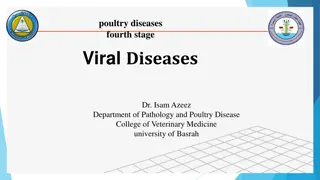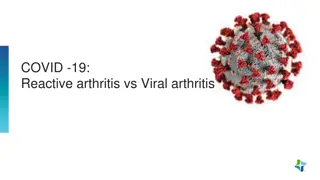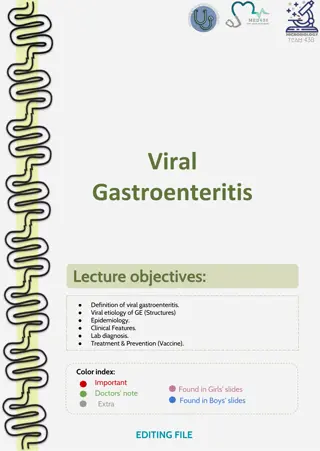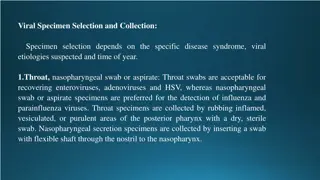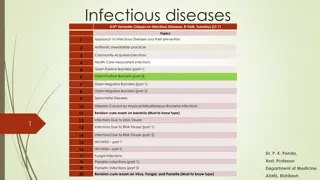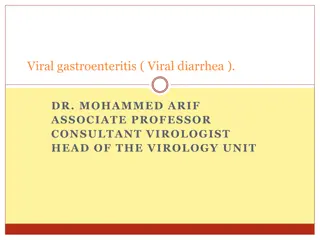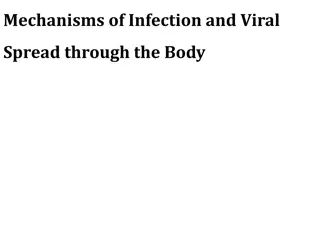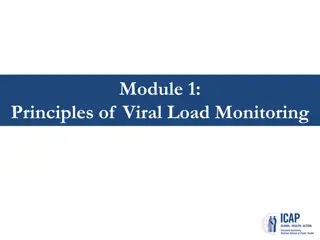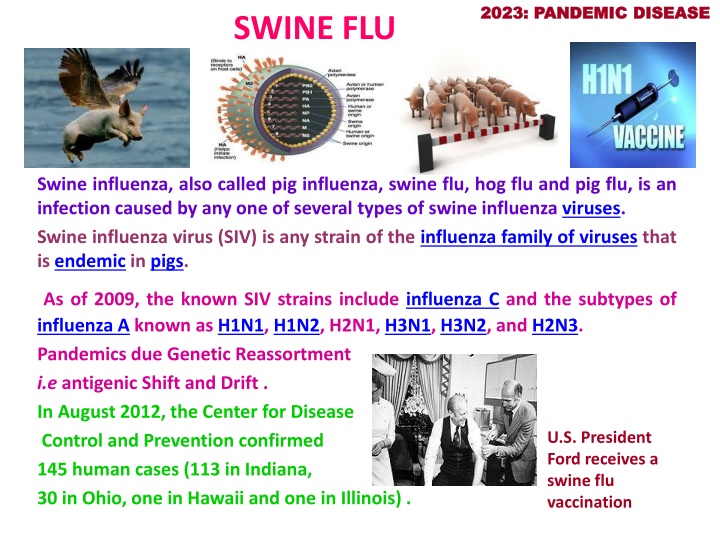
Emerging Infectious Diseases Overview 2023
Explore the latest on pandemic diseases including Swine Flu, Rotavirus, Hantavirus, and Hepatitis B Virus. Learn about symptoms, transmission, prevention, and treatment options for these contagious diseases affecting global health.
Download Presentation

Please find below an Image/Link to download the presentation.
The content on the website is provided AS IS for your information and personal use only. It may not be sold, licensed, or shared on other websites without obtaining consent from the author. If you encounter any issues during the download, it is possible that the publisher has removed the file from their server.
You are allowed to download the files provided on this website for personal or commercial use, subject to the condition that they are used lawfully. All files are the property of their respective owners.
The content on the website is provided AS IS for your information and personal use only. It may not be sold, licensed, or shared on other websites without obtaining consent from the author.
E N D
Presentation Transcript
2023: PANDEMIC DISEASE 2023: PANDEMIC DISEASE SWINE FLU Swine influenza, also called pig influenza, swine flu, hog flu and pig flu, is an infection caused by any one of several types of swine influenza viruses. Swine influenza virus (SIV) is any strain of the influenza family of viruses that is endemic in pigs. As of 2009, the known SIV strains include influenza C and the subtypes of influenza A known as H1N1, H1N2, H2N1, H3N1, H3N2, and H2N3. Pandemics due Genetic Reassortment i.e antigenic Shift and Drift . In August 2012, the Center for Disease Control and Prevention confirmed 145 human cases (113 in Indiana, 30 in Ohio, one in Hawaii and one in Illinois) . U.S. President Ford receives a swine flu vaccination
ROTA VIRUS ENDEMIC DISEASE ENDEMIC DISEASE Rotavirus is the most common cause of severe diarrhoea among infants and young children. It is a genus of double- stranded RNA virus in the family Reoviridae. The virus is transmitted by the faecal-oral route. It infects and damages the cells that line the small intestine and causes gastroenteritis (which is often called "stomach flu ). In 2009, the World Health recommended that rotavirus vaccine be included in all national immunization programmes. Public health campaigns to combat rotavirus focus on providing oral rehydration therapy for infected children and vaccination to prevent the disease. Organization (WHO)
HANTA VIRUS Hantaviruses are negative sense RNA viruses in the Bunyaviridae.Generally arthropod-borne viruses,but hantaviruses are thought to be transmitted to humans mainly through inhalation of aerosolized rodent excreta or rodent bites. The name hantavirus is derived from the Hantan River area in South Korea, which provided the founding member of the group: Hantan virus (HTNV) Hemorrhagic fever with renal syndrome Hantavirus (cardio-)pulmonary syndrome In late August and early September of 2012, eight new cases of Hantavirus were confirmed, including three deaths, in the Curry Village area of Yosemite National Park. General prevention can be accomplished by disposing of rodent nests, sealing any cracks
Hepatitis B virus It is classified as part of the Hepadnaviridae and genome of HBV is made of circular DNA, but it is unusual because the DNA is not fully double- stranded The nucleocapsid encloses the viral DNA and a DNA polymerase that has reverse transcriptase similar to retroviruses.which is called the surface antigen (HBsAg) Sexual - sex workers and homosexuals are particular at risk Parenteral - Health Workers are at increased risk Perinatal - Mothers who are HBeAg positive are much more likely to transmit to their offspring than those who are not Treatment by employing Lamivudine , Adefovir and Entecavir. Vaccination - Highly effective recombinant vaccines are now available(HBV)
Diarrheagenic E.coli E.coli Enteropathogenic E.coli (EPEC) Enterotoxigenic E.coli (ETEC) Enteroinvasive E.coli (EIEC) Enterohemorrhagic E.coli (EHEC) or Verotoxigenic E.coli (VTEC) Enteroaggregative E.coli (EAEC) : stacked brick appearance. Diffusely adherent E.coli (DAEC) Identification IMViC Test: + + - - TSI Agar : Acid No Gas Dr Ekta Page 5
CHIKUNGUNYA Chikungunya fever transmitted to humans by the bite of infected Aedes Aegypti mosquitoes. CHIKV is a member of the genus Alphavirus, in the family Togaviridae. CHIKV was first isolated from the blood of a febrile patient in Tanzania in 1953 and cause of numerous human epidemics . Symptoms of disease includes fever, (joint pain), swelling of joints, stiffness of joints, muscular pain, headache, fatigue (weakness), nausea, vomiting and rash. Prevention of Chikungunya: The best way to avoid CHIKV infection is to prevent mosquito bites. In addition we strongly recommend to have "Homeopathic Genus Epidemicus" for double protection.
DENGUE Dengue fever is a disease caused by a flavi virus that are transmitted by mosquitoes. It is an acute illness of sudden onset that usually follows a benign course with symptoms such as headache, fever, exhaustion, severe muscle and joint pain, swollen glands (lymphadenopathy), and rash. The presence of fever, rash, and headache (and other pains) is particularly characteristic of dengue. Other signs of dengue fever include bleeding gums, severe pain behind the eyes, and red palms and soles. Dengue Fever Prevention Neither vaccine nor drugs for preventing infection are available.
RABIES Rabies is dread disease Rabies virus belongs to genus yssavirus genus and family Rhabdoviridae. These viruses are enveloped and have a single stranded RNA genome with negative-sense. The rabies virus is a neurotropic virus that causes fatal disease in human and animals. Rabies transmission can occur through the saliva of infected animals. Diseased diagnosed by presence viral antigen and Negri body in brain tissue. Symptoms includes Fever Headache Malaise Hyper salivation Excitement agitation and paralysis Prevention: Vaccination, Rabies vaccine was developed by Pasteur .
MYCOBACTERIUM TUBERCULOSIS M. tuberculosis, then known as the "tubercle bacillus", was first described on 24 March 1882 by Robert Koch, who subsequently received the Nobel Prize in physiology or medicine for this discovery in 1905; the bacterium is also known as "Koch's bacillus". M. tuberculosis requires oxygen to grow. It does not retain any bacteriological stain due to high lipid content in its wall, and thus is neither Gram-positive nor Gram-negative; hence Ziehl-Neelsen staining, or acid- fast staining. Tuberculin Skin Test Tuberculin is a mixture known as purified protein derivatives (PPD) from TB bacilli. It is a test for delayed type hypersensitivity. Positive reaction, reddening and thickening (> 5mm) at the site of injection after 2-3 days, indicates cellular immunity to tubercle bacilli. Treated with multiple drugs for a long period of time: Rifampin, Isoniazid (INH), Pyrazinamide, Ethambutol, and Streptomycin.
AVIAN INFLUENZA VIRUS (H5N1) EPIDEMICAND PANDEMIC DISEASE EPIDEMICAND PANDEMIC DISEASE Bird flu also referred to as avian flu is an infection in birds caused by an influenza virus. Since the viruses are highly contagious, danger to humans arises when domesticated birds (for example chickens, ducks, and turkeys) become infected. In November 2010, officials in Hong Kong announced that a woman had contracted bird flu, the first reported case of the condition in seven years. In 2011, a mutated strain of highly pathogenic bird flu appeared, which is concerning because the existing poultry vaccines are not very effective against the new strain.
Pathogenicities of Klebsiella pneumoniae Pulmonary infections - Pneumonia High fatality In middle aged or older persons with medical problems like DM, alcoholism, chronic broncho pulmonary disease Extensive necrosis & hemorrhage resulting in thick, mucoid, brick red sputum currant jelly like Extrapulmonary infections Meningitis & enteritis in infants UTI Septicemia An important cause of nosocomial infections. Identification tests I M Vi C test: - - + + TSI Agar : Acid with Agar Urease: Positive Dr Ekta Page 11
Scrub Typhus EPIDEMIC DISEASE EPIDEMIC DISEASE Agent: Orientia tsutsugamushi. Reservoir: Trombiculid mite. Found to occur in a variety of habitats like sand beaches, mountain deserts and equatorial rain forests Scrub typhus is caused by Bacteria namely o. tsutsugamushi It was first reported in Japan.First in India during world war II Obligate intra cellular parasite on arthropod vectors, Inability to grow in the cell free media.Gram negative , pleomorphic , non motile and non capsulated Incubation period is 3 week. The disease sets with a fever, headache, chills, malaise, conjunctival Irritation.A red macular rash appears on the fifth day Lymphadenopathy, LymphocytosisThey become chiefly localized in vascular endothelial cells, which enlarge degenerate and causes thrombus formation with partial or complete occlusion of vascular endothelium
Department of Microbiology VISION : The Vision of the Department is to educate and train students in the discipline of Microbiology and to produce competent Microbiology and serve the Society by promoting science. students in



